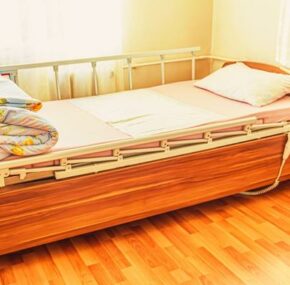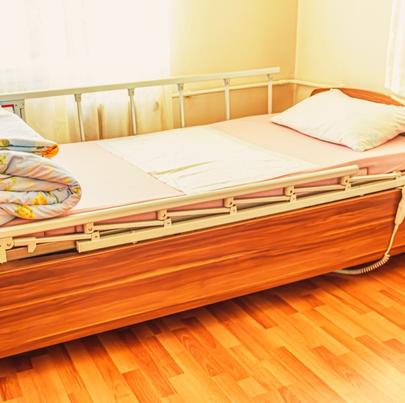The use of bed rails in nursing homes has led to severe injuries and death. Bed rails are used to increase independence and keep elderly patients from falling out of bed. However, unsafe bed rails can lead to falls, entrapment, asphyxiation, and death.

In Illinois at least 10 nursing homes have been cited since 2011 for using bed rails as restraints, failing to protect residents from falls and injuries, and placing them at risk of entrapment or asphyxiation.
Bed Rail Injuries and Deaths: How They Happen
The most common way patients are injured by bed rails is when the head or neck becomes trapped between the mattress and the rail, or in areas that exist between the bars of the rail. While entrapment is possible when a nursing home resident is sleeping, it usually occurs when a frail and vulnerable resident tries to move from his or her bed without assistance. This results in strangulation, suffocation, or cardiac arrest.
Serious injuries may occur when residents try to climb over the rails. Residents with dementia, anxiety disorders, or Alzheimer’s may try to exit the bed during a moment of confusion or disorientation. Falling off the bed can cause serious fractures and broken bones.
The Prevalence of Bed Rail Injuries
Between 1985 and 2013, the Food and Drug Administration (FDA) received 828 reports of patients caught, entangled, trapped, or strangled in beds with rails. The reports included 155 nonfatal injuries, 531 deaths, and 220 near misses. Each year, about 4,000 elderly residents visit hospital emergency rooms due to bed rail-related injuries. The FDA and CPSC believe the problem is understated because many nursing homes do not report bed rails as the cause of injury or death.
Why Are Bed Rails Still Unsafe?
As early as 1995, the FDA issued a consumer safety warning which met strong opposition from the industry, claiming that compliance with the standards would be costly. To date, bed rails don’t have significant safety warnings and guidelines for the manufacturing process. No analysis has been conducted to determine how much it would cost to reduce the hazards.
In 2006, manufacturers of bed rails adopted voluntary guidelines and included recommended width limits for the gap between the mattress and the rail. But nursing homes often disassemble and reassemble beds when moving them around. In doing so, they end up using the wrong mattress, creating dangerous gaps and an environment for injuries to happen.







